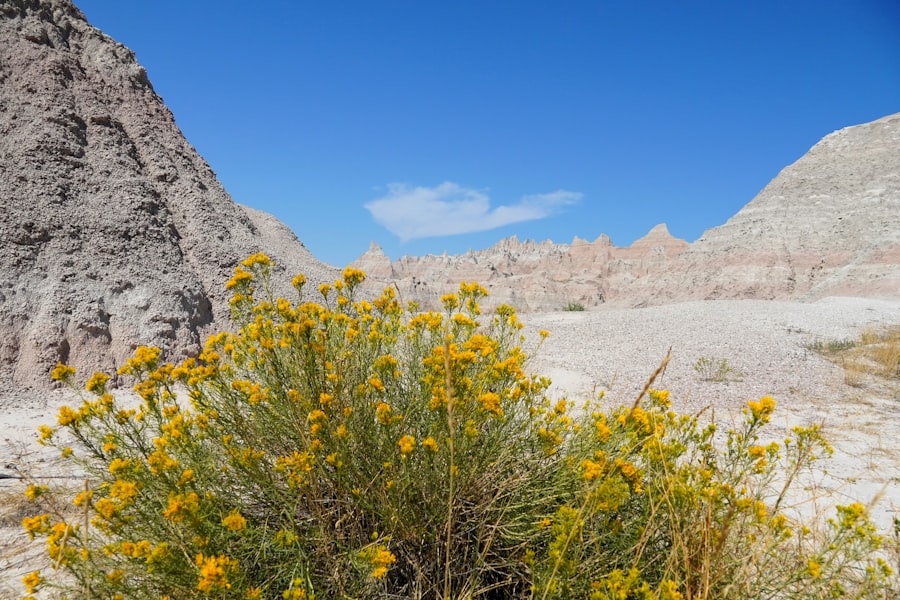Download links
How to install Exploring the Enigmatic Chocolate Hills APK?
1. Tap the downloaded Exploring the Enigmatic Chocolate Hills APK file.
2. Touch install.
3. Follow the steps on the screen.
Description
The Chocolate Hills, a geological wonder located in the Bohol province of the Philippines, present a captivating landscape that has intrigued scientists and tourists alike. These hills, numbering over 1,200, are characterized by their conical shapes and uniformity, rising dramatically from the surrounding flat terrain. The formation of these hills is attributed to a combination of geological processes, primarily limestone erosion and the uplift of coral deposits.
The region was once submerged underwater, and as tectonic activity raised the seabed, the coral reefs were exposed to the elements. Over thousands of years, rainwater and natural erosion sculpted the limestone into the distinctive hill formations we see today. The unique topography of the Chocolate Hills is further enhanced by the seasonal changes in vegetation.
During the dry season, the grass covering the hills turns a rich brown color, resembling chocolate mounds, which is how they got their name. This transformation is not merely aesthetic; it reflects the underlying geology and climate of the region. The hills are primarily composed of limestone, which is susceptible to weathering and erosion.
The interplay between rainfall, vegetation, and geological processes creates a dynamic landscape that continues to evolve. Researchers have studied these formations extensively, yet many aspects of their origin remain shrouded in mystery, making them a subject of ongoing scientific inquiry.
Key Takeaways
- The Chocolate Hills were formed through the uplift of coral deposits and subsequent erosion, creating a unique geological landscape.
- The Chocolate Hills are home to a diverse range of flora and fauna, including the endangered tarsier and various species of orchids and ferns.
- The local community considers the Chocolate Hills to be a sacred place, with various legends and folklore surrounding their formation.
- Visitors can experience the Chocolate Hills through guided tours, hiking, and adventure activities such as zip-lining and ATV rides.
- Conservation efforts are in place to protect the natural beauty of the Chocolate Hills, including reforestation and sustainable tourism practices.
The Unique Flora and Fauna of the Chocolate Hills
The Chocolate Hills are not only a geological marvel but also a rich ecosystem teeming with diverse flora and fauna. The region’s unique topography creates microhabitats that support various plant species, many of which are endemic to the area. Grasses dominate the landscape, but there are also patches of shrubs and trees that provide shelter and food for local wildlife.
The hills are home to several species of birds, including the Philippine tarsier, one of the smallest primates in the world. These nocturnal creatures are known for their large eyes and remarkable agility, making them a fascinating aspect of the local biodiversity. In addition to birds and tarsiers, the Chocolate Hills support a variety of reptiles and insects that thrive in this unique environment.
The presence of these species indicates a healthy ecosystem that plays a crucial role in maintaining ecological balance. Conservationists emphasize the importance of preserving this biodiversity, as it contributes to the overall health of the region and offers opportunities for scientific research. The interplay between flora and fauna in the Chocolate Hills not only enhances their beauty but also underscores their ecological significance, making them a vital area for conservation efforts.
Exploring the Cultural Significance of the Chocolate Hills to the Local Community

The Chocolate Hills hold profound cultural significance for the local communities in Bohol. For generations, these hills have been woven into the fabric of local folklore and traditions. They are often seen as symbols of beauty and resilience, inspiring stories that reflect the values and beliefs of the people who inhabit this region.
Local legends often attribute mystical qualities to the hills, with tales of giants who once roamed the land or battles fought over love and honor. These narratives not only enrich the cultural heritage of Bohol but also serve as a means of passing down history from one generation to another. Moreover, the Chocolate Hills play a vital role in the local economy through tourism.
As one of Bohol’s most iconic landmarks, they attract visitors from around the world who come to marvel at their unique beauty. This influx of tourists has led to increased economic opportunities for local residents, from guiding services to hospitality businesses. However, this economic reliance on tourism also brings challenges, as it necessitates a balance between preserving cultural integrity and accommodating visitors.
The local community’s connection to the Chocolate Hills is thus multifaceted, encompassing both pride in their natural heritage and an awareness of the need for sustainable practices that protect this iconic landscape.
The Best Ways to Experience the Chocolate Hills: Tours and Activities
| Tour Name | Duration | Highlights | Price |
|---|---|---|---|
| Chocolate Hills Adventure Tour | Full day | Chocolate Hills, ATV ride, Loboc River Cruise | |
| Chocolate Hills Eco-Tour | Half day | Chocolate Hills, Butterfly Sanctuary, Tarsier Conservation Area | |
| Chocolate Hills Trekking Experience | 3 hours | Chocolate Hills, local village visit, scenic viewpoints |
Experiencing the Chocolate Hills is an adventure that can be tailored to suit various interests and preferences. One of the most popular ways to appreciate these geological formations is through guided tours that provide insights into their history and significance. Many tour operators offer packages that include visits to viewing platforms, where visitors can take in panoramic views of the hills stretching across the horizon.
These vantage points are strategically located to showcase the hills’ unique shapes and colors, particularly during sunrise or sunset when the light casts enchanting shadows across the landscape. For those seeking a more immersive experience, hiking trails around the Chocolate Hills offer opportunities to explore the area on foot. These trails wind through lush vegetation and provide access to lesser-known viewpoints that reveal different perspectives of the hills.
Additionally, some tours incorporate cultural experiences, such as visits to local villages where visitors can engage with residents and learn about traditional practices. Adventure seekers may also find opportunities for activities like ATV rides or zip-lining that add an adrenaline rush to their exploration of this stunning landscape. Each activity not only enhances appreciation for the Chocolate Hills but also fosters a deeper connection with Bohol’s natural beauty.
Conservation Efforts to Preserve the Natural Beauty of the Chocolate Hills
As awareness grows regarding environmental issues, conservation efforts aimed at preserving the Chocolate Hills have become increasingly important. Local government units and environmental organizations have initiated programs designed to protect this unique landscape from threats such as deforestation, pollution, and unsustainable tourism practices.
For instance, campaigns promoting “Leave No Trace” principles encourage tourists to minimize their impact on the environment by avoiding littering and respecting wildlife habitats. In addition to educational efforts, reforestation projects have been implemented to restore areas around the Chocolate Hills that have been degraded over time.
Collaborations between government agencies, NGOs, and local communities are essential in these conservation efforts, as they ensure that all stakeholders are involved in protecting this natural treasure. By fostering a sense of stewardship among residents and visitors alike, these initiatives aim to safeguard the Chocolate Hills for future generations while maintaining their ecological integrity.
The Legend of the Chocolate Hills: Myths and Folklore

The Legend of the Warring Giants
One legend tells the story of two giants who engaged in a fierce battle over a beautiful maiden. In their rage, they hurled boulders at each other until they eventually grew tired and decided to bury their weapons beneath what would become known as the Chocolate Hills. This tale not only explains the hills’ unusual shapes but also reflects themes of love and conflict that resonate deeply within Filipino culture.
The Heartbroken Giant
Another story speaks of a giant named Arogo who fell in love with a mortal woman named Aloya. When Aloya passed away, Arogo was heartbroken and wept for days on end until his tears formed into hills—these became known as the Chocolate Hills.
Connecting with the Environment
Such legends serve as a means for locals to connect with their environment on a deeper level, imbuing natural features with human emotions and experiences. These narratives are often shared during community gatherings or festivals, reinforcing cultural identity while captivating both locals and visitors with tales that transcend time.
The Chocolate Hills as a UNESCO World Heritage Site
The recognition of the Chocolate Hills as a UNESCO World Heritage Site would elevate their status on an international scale, highlighting their geological significance and cultural importance. While they have not yet received this designation, there have been ongoing discussions about nominating them due to their unique characteristics and ecological value. UNESCO World Heritage status would not only bring increased attention to conservation efforts but also provide access to funding and resources aimed at preserving this natural wonder.
Achieving UNESCO recognition would require comprehensive documentation of both geological features and cultural narratives associated with the Chocolate Hills. This process involves collaboration among scientists, historians, and local communities to create a compelling case for their inclusion on the World Heritage list. Such recognition would enhance global awareness about Bohol’s natural heritage while promoting sustainable tourism practices that respect both environmental integrity and local culture.
The Future of the Chocolate Hills: Sustainable Tourism and Development
Looking ahead, sustainable tourism will play a crucial role in shaping the future of the Chocolate Hills. As tourism continues to grow in popularity, it is essential to develop strategies that balance economic benefits with environmental protection. Local authorities are increasingly recognizing that sustainable practices can enhance visitor experiences while safeguarding natural resources.
This includes implementing visitor management systems that limit foot traffic in sensitive areas and promoting eco-friendly accommodations that minimize environmental impact. Moreover, engaging local communities in tourism development is vital for ensuring that benefits are equitably distributed. By involving residents in decision-making processes related to tourism initiatives, stakeholders can create opportunities for local entrepreneurship while preserving cultural heritage.
Educational programs aimed at tourists can also foster respect for local customs and encourage responsible behavior when visiting natural sites like the Chocolate Hills. Ultimately, by prioritizing sustainability in tourism development, Bohol can protect its iconic landscape while providing meaningful experiences for visitors from around the world.
FAQs
What are the Chocolate Hills?
The Chocolate Hills are a geological formation located in the Bohol province of the Philippines. They are made up of around 1,200 to 1,776 conical limestone hills, which are covered in green grass that turns brown during the dry season, giving them a chocolate-like appearance.
How were the Chocolate Hills formed?
The exact formation process of the Chocolate Hills is still a subject of debate among geologists. One theory suggests that they are the weathered formations of a marine limestone on top of an impermeable layer of clay. Another theory proposes that they are the result of the uplift of coral deposits and the action of rainwater and erosion.
What is the significance of the Chocolate Hills?
The Chocolate Hills are a major tourist attraction in the Philippines and are considered a natural wonder. They have been declared the country’s third National Geological Monument and proposed for inclusion in the UNESCO World Heritage List.
Can visitors explore the Chocolate Hills?
Yes, visitors can explore the Chocolate Hills by climbing the viewing deck in the town of Carmen or by taking a guided tour. There are also hiking trails and ziplines available for those who want to experience the hills up close.
Are there any legends or myths associated with the Chocolate Hills?
According to local folklore, the Chocolate Hills were formed from the tears of a giant named Arogo, who wept over the death of his beloved. Another legend tells the story of two feuding giants who hurled rocks, boulders, and sand at each other, which eventually formed the hills.





